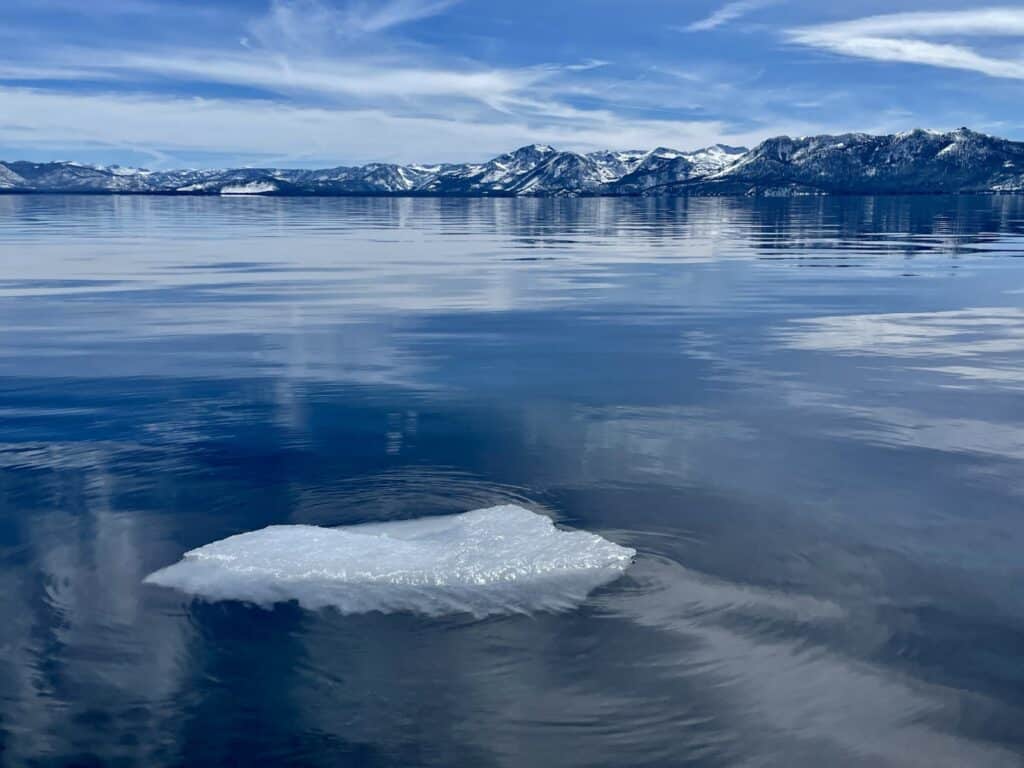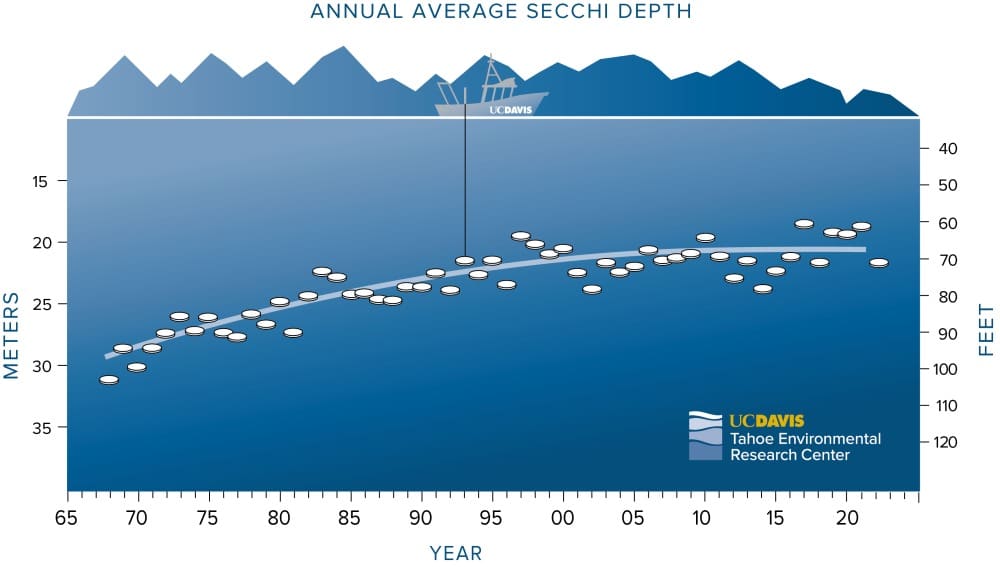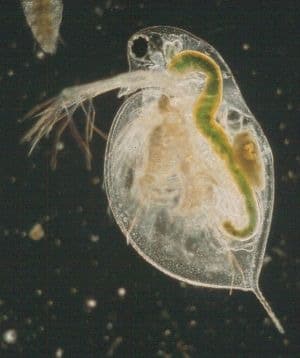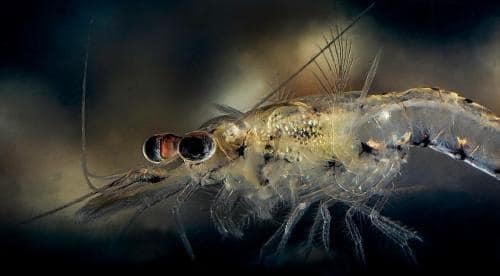
De acuerdo con el Centro de Investigación Ambiental Davis Tahoe ‒TERC‒ de la Universidad de California, durante los últimos cinco meses de 2022, el lago Tahoe fue el más claro desde la década de 1980, gracias en gran parte al resurgimiento del zooplancton nativo del lago.
Investigadores del centro enfatizaron que el proceso aún se encuentra en sus primeras etapas y esperan que la mejora de la claridad continúe este 2023.

Los principales factores que afectan la claridad del lago son la concentración de partículas en un rango de tamaño específico, como limo y arcilla, y diminutos fitoplancton o algas. El fitoplancton Cyclotella, un alga unicelular, se encuentra en este rango de tamaño y ha afectado la claridad en la mayoría de los años.

El zooplancton son animales pequeños y microscópicos. Algunos zooplánctones, particularmente Daphnia y Bosmina, están especializados para consumir partículas en ese rango de tamaño crítico.
«La dafnia y la bosmina desaparecieron en gran medida del lago después de que fueron derribadas tras la introducción del camarón Mysis en la década de 1960», dijo Geoffrey Schladow, director del Centro de Investigación Ambiental UC Davis Tahoe. «A fines de 2021, la población de Mysis se desplomó inesperadamente, y Daphnia y Bosmina tardaron 12 meses en aumentar su número y comenzar su limpieza natural».
Se sabe que otros factores influyen en los cambios de claridad de un año a otro. Estos incluyen la magnitud de la escorrentía, el calentamiento de la superficie del lago y la profundidad a la que se mezcla el lago en el invierno anterior. El informe examinó todos estos factores y concluyó que solo el cambio en la comunidad de zooplancton podría explicar la magnitud del cambio de este año.
La claridad del agua se mide como la profundidad a la que un disco blanco de 10 pulgadas, llamado disco Secchi, permanece visible cuando se sumerge en el agua.
En 2022, la claridad anual promedio del lago Tahoe fue de 71.7 pies en comparación con los 61 pies de 2021. El hallazgo clave de 2022 fue la gran mejora en la claridad del lago de agosto a diciembre, cuando la profundidad promedio de Secchi fue de 80.6 pies. Esto coincidió con los números más altos del zooplancton Daphnia y Bosmina.
Los estados de California y Nevada, que comparten una frontera en el lago Tahoe, están trabajando activamente para restaurar la claridad del lago a sus históricos 97.4 pies.
«Esperamos que el impacto de Daphnia y Bosmina crezca durante 2023, y la claridad puede volver a los niveles de la década de 1970, a pesar de la gran escorrentía esperada de la capa de nieve récord de este año», dijo el capitán de barco TERC y observador del disco Secchi, Brant Allen.
«Estos eventos respaldan la hipótesis que presentamos hace varios años de que la red alimentaria es un factor importante en el control de la claridad del lago», agregó.
Sin embargo, la asistencia brindada por el plancton Daphnia y Bosmina puede ser solo a corto plazo, puntualizó el centro en un comunicado.
A su vez, se espera que las poblaciones de camarones mysis se recuperen a medida que consuman Daphnia y Bosmina, para que la claridad vuelva a ser a lo visto en los últimos 20 años.

«Las acciones de gestión futuras deberían buscar explícitamente la incorporación de formas de controlar la población de Mysis», dijo Geoffrey Schladow. «Tenemos una breve ventana de tiempo para monitorear el lago en ausencia de Mysis y luego rastrear los impactos de su regreso en la claridad del lago».
Esto se sumaría a los arduos esfuerzos que se están realizando para mantener las partículas finas y los nutrientes fuera del lago Tahoe. Las agencias de gestión en la cuenca informan que más de 500 mil libras de sedimentos finos y otros contaminantes que dañan la claridad se mantienen fuera del lago cada año a través de proyectos de control de erosión y mantenimiento de carreteras.
Los científicos de TERC actualmente están monitoreando las comunidades de zooplancton a través de fondos de donantes. También están trabajando con guías de pesca locales para monitorear los cambios en los peces. Se espera que el salmón Kokanee, por ejemplo, sea más grande en 2023, ya que las dafnias son su fuente de alimento preferida.
Te puede interesar: ¿Está escalando la crisis del cuidado infantil?

